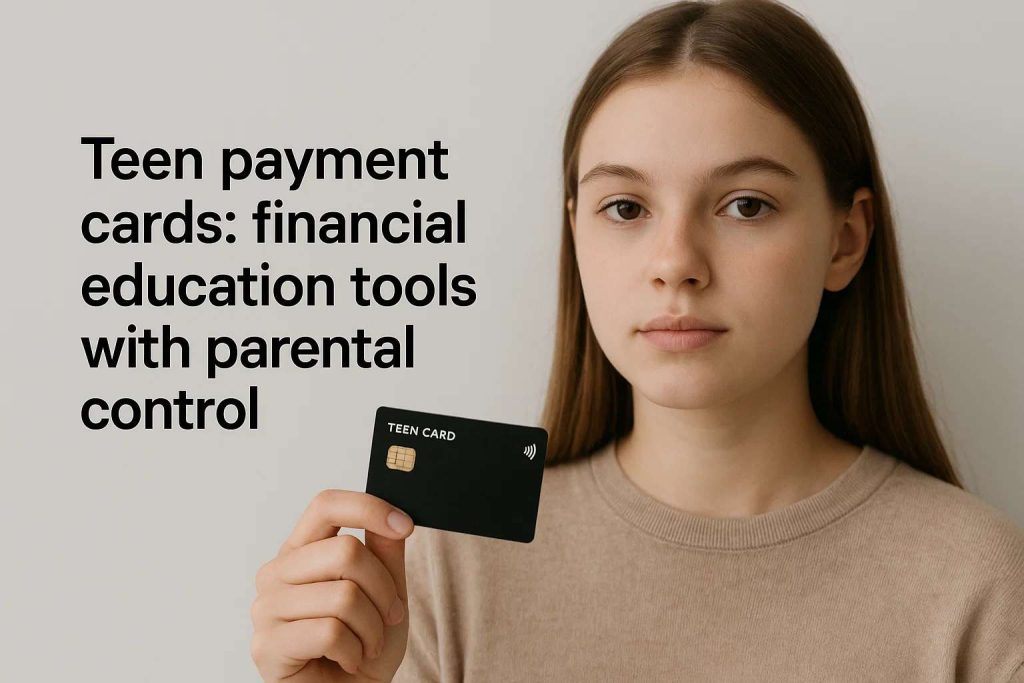Teenagers are growing up in a world where digital payments dominate daily life, and many parents wonder how to prepare their children for this financial reality. Teen payment cards have emerged as a bridge between parental oversight and teenage independence.
Anúncios
These tools provide young people with their first hands-on experience in managing money while ensuring that parents can guide their decisions responsibly. The concept combines modern banking technology with financial education, making it possible to cultivate habits that will serve teens throughout their lives.
The importance of financial literacy in adolescence

Financial literacy has become a cornerstone of modern education, yet many schools still fail to address it adequately. Teen payment cards step into this gap by turning everyday transactions into teachable moments. When teenagers learn to monitor their balances, review transaction histories, and recognize the consequences of overspending, they acquire real-world financial skills that textbooks cannot fully provide.
Anúncios
Furthermore, the early introduction of financial tools supports the development of confidence in money management. Teens who understand how to budget and save are better prepared to resist peer pressure, impulsive purchases, and the dangers of debt in adulthood. A teen payment card transforms abstract financial concepts into tangible lessons, offering a smoother transition to independent adulthood.
How parental control strengthens responsible habits
Parental involvement is essential to making teen payment cards effective educational tools. These products are designed with built-in features that allow parents to monitor spending, set transaction limits, and receive notifications for every purchase. Such controls give parents the ability to step in when necessary, while still allowing teens enough freedom to learn from smaller mistakes without severe consequences.
Equally important, parental controls encourage open conversations about money. Parents can use spending patterns as a starting point for discussions on priorities, needs versus wants, and long-term goals. This collaborative approach turns financial education into a shared experience, fostering trust while reinforcing responsible decision-making.
Digital safety and fraud protection for young users
Introducing teenagers to electronic payments also raises questions of digital safety. Teen payment cards typically include safeguards such as fraud detection, card locking features, and controlled online spending. These measures help protect young users from scams, identity theft, and unauthorized transactions.
In addition, financial institutions offering teen payment cards often provide secure platforms with simplified user interfaces. These interfaces are designed to be intuitive for young users, reducing the risk of mistakes. With the support of these technologies, teenagers can develop the habit of protecting their personal and financial information—an essential skill in the digital economy.
Real-world applications and the role of companies
Several companies have recognized the value of combining financial education with parental oversight. For example, Greenlight has positioned itself as a leading provider of teen payment cards that emphasize savings goals, budgeting tools, and family engagement.
These platforms also highlight the importance of aligning financial products with real-world applications. Teens can use their cards to make online purchases, buy everyday items, or contribute to group activities, all within controlled limits. Each transaction becomes a lesson in accountability, helping them understand how financial decisions affect their daily lives.
Preparing teens for future financial independence
Teen payment cards are not simply short-term conveniences; they are investments in long-term independence. By practicing budgeting, saving, and responsible spending during adolescence, teens enter adulthood better equipped to manage complex financial products.
Parents who introduce their children to these tools contribute to a more financially literate society. As today’s teenagers grow into tomorrow’s adults, they bring with them habits and values formed in their formative years. Teen payment cards, therefore, serve as more than just practical tools—they are stepping stones toward a culture of informed and responsible financial behavior that benefits individuals, families, and communities alike.

